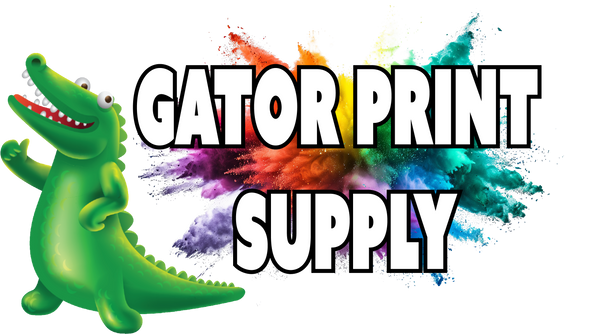Understanding Hot Peel DTF Transfers: A Quick Guide
Share
In the world of Direct-to-Film (DTF) printing, having a thorough understanding of the different peeling methods is crucial for getting the best results for your projects. One method that has gained attention among print enthusiasts is the hot peel technique. Let’s explore what hot peel DTF transfers are, how they work, and why they are becoming popular in the customization industry.
What is Hot Peel in DTF Transfers?
Hot peel DTF refers to the process of removing the film backing from a transfer while it is still hot, right after pressing it onto a garment. This method contrasts with the cold peel approach, where the transfer is allowed to cool down completely before peeling.
The ability to hot peel comes from a special coating applied to the film. This coating is designed to release the transfer from the film while it is still hot, enabling a quick and seamless removal. The hot peel technique is known for its efficiency, allowing for a faster production process without sacrificing quality. However, how fast you can peel depends on the brand and quality of your film and powder. Some films may require a brief moment to settle, while others can be peeled almost immediately.
DTF Transfer Film (or Paper): The film used in this process is commonly referred to as DTF transfer paper. It comes in various sizes, but the 24-inch and 13-inch film roll sizes are particularly popular. These sizes cater to both large production setups and smaller, more specialized printing needs, making them versatile options for many users.
Pros of Hot Peel DTF Transfers
-
Faster Production Times: One of the primary advantages of hot peel DTF transfers is the speed. Since you can remove the film backing right after pressing, there’s no waiting period, making this method ideal for high-volume production or on-the-spot customizations. However, keep in mind that the exact peeling time varies based on the quality of your film and powder.
-
Enhanced Vibrancy: Hot peel transfers tend to give designs a crisp and vivid look. The heat retained in the transfer often helps the ink settle deeply into the fabric, producing bold and bright results.
-
Smooth Finish: Many users find that hot peel transfers provide a smoother, more integrated feel on the fabric compared to some other methods. This finish can give the design a more professional and seamless appearance.
-
Versatility Across Fabrics: The hot peel method can be applied to a variety of fabrics, making it versatile for different kinds of apparel and products.
-
Using Teflon Pads or Parchment Paper: To ensure even heat distribution and protect the transfer and garment, a Teflon pad or parchment paper can be placed over the design before pressing. This layer not only helps create a smooth, professional finish but also prevents any sticking issues during the press.
Hot Peel vs. Cold Peel: Can Hot Peel Transfers Be Peeled Cold?
Interestingly, one of the unique aspects of many hot peel DTF transfers is that they can also be peeled cold. While the hot peel method is faster, peeling the transfer cold allows more flexibility for certain projects or when working in varied environments. Here’s how peeling cold compares:
- Greater Control: Peeling cold offers greater control and may reduce the risk of smudging or lifting parts of the design. This can be especially helpful when working with more intricate or delicate designs.
- Improved Adhesion: For some fabrics or designs, waiting for the transfer to cool before peeling can help ensure that every part of the transfer adheres perfectly.
Choosing between hot and cold peeling depends on your project needs and preferences. Hot peel is great for speed and vibrant designs, while cold peel provides extra caution for complex prints.
Tips for Getting the Best Results
- Follow Manufacturer Instructions: Always adhere to the recommended time, temperature, and pressure settings for your DTF film. Even minor adjustments can affect the quality of the transfer.
- Use a Teflon Pad or Parchment Paper: Placing a Teflon pad or parchment paper over your design during the heat press process can help distribute heat evenly and prevent any unwanted sticking. This step is essential for achieving a polished, high-quality result.
- Choose the Right Film Size: Depending on your needs, you might prefer a 24-inch roll for large-scale production or a 13-inch roll for smaller projects. Both sizes are widely used in the industry and cater to various printing demands.
- Test Before Committing: If you’re new to DTF printing or experimenting with a new type of fabric, consider testing the hot peel method on a sample piece to ensure optimal results.
- Peel Smoothly: Whether peeling hot or cold, a smooth and steady motion will prevent lifting or smudging.
Final Thoughts
Hot peel DTF transfers are a fantastic option for quick, vibrant, and professional-looking prints. They are a game-changer for businesses and hobbyists looking to streamline their workflow without compromising on quality. The availability of popular film sizes like 24 and 13 inches adds to their convenience and versatility. Additionally, the special coating on the film that allows for hot peeling is an essential feature, giving users the flexibility to peel quickly, depending on the brand and quality of their materials.
Whether you’re a seasoned DTF pro or just starting, understanding the nuances of hot peel and cold peel techniques—plus the importance of tools like Teflon pads or parchment paper—will set you up for success. Happy printing!
